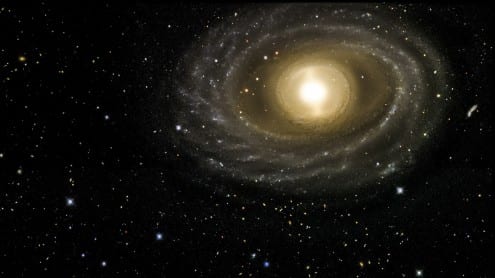Photo album from the Dark Energy Survey
By Oli Usher, on 18 August 2014
The Dark Energy Survey, which has just begun its second year of observations, is gathering data about one of the most puzzling phenomena to be discovered in the past century: that the universe is not only expanding, but is doing so at an ever faster rate. Some as yet unknown force dubbed ‘dark energy’ is driving this acceleration.
Dark energy affects the appearance and evolution of the universe on very large scales. The Dark Energy Survey aims to find out more about this phenomenon by studying measuring four key cosmological probes:
- The number of galaxy clusters;
- The distances to faraway supernovae;
- The bending of light by gravitational lensing;
- and the pattern of the distribution of galaxy clusters across the universe.
Observing these requires sharp images that can detect very distant (and hence faint) objects, and so the the images collected by the Dark Energy Camera, the survey’s workhorse, are often quite stunning.

This image of the NGC 1398 galaxy was taken with the Dark Energy Camera. This galaxy lives in the Fornax cluster, roughly 65 million light-years from Earth. It is 135,000 light-years in diameter, just slightly larger than our own Milky Way galaxy, and contains more than a billion stars. Credit: Dark Energy Survey.
To mark the beginning of the second year of DES’s five-year observing run, the team have published a gallery of the most attractive images from the first year of operation, including the image of galaxy NGC 1398, pictured above. The complete the gallery is at the end of this post and in the faculty Flickr gallery.
UCL is deeply involved in DES, and Prof Ofer Lahav, Vice-Dean (Research) of Mathematical & Physical Sciences, is chair of the DES UK board and co-chair of the DES international science committee.
More information on UCL’s involvement in the DES science programme is available in an article on the UCL news pages.
Gallery
Copyright: Dark Energy Survey photos are free to use providing they are credited to the Dark Energy Survey. Any queries on reuse should be sent to Fermilab Visual Media Services at vismedsr@fnal.gov.
 Close
Close


